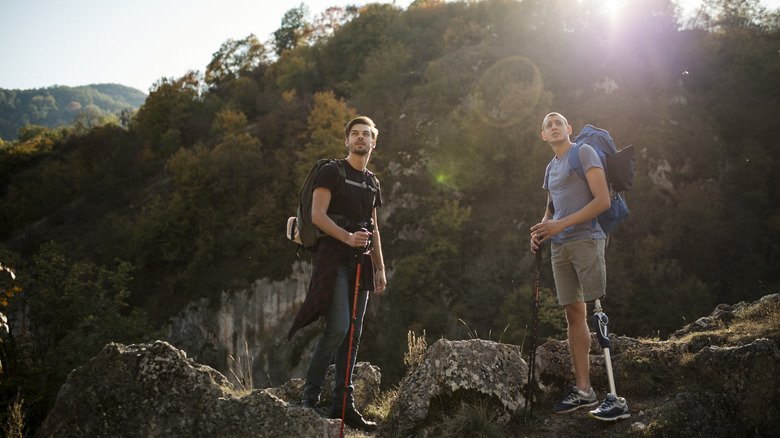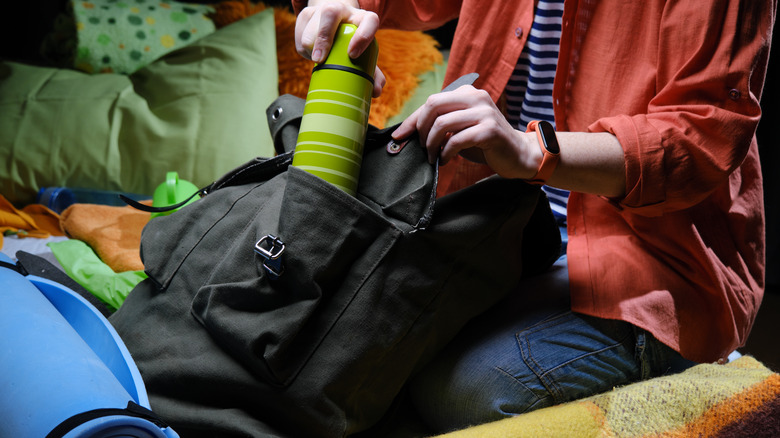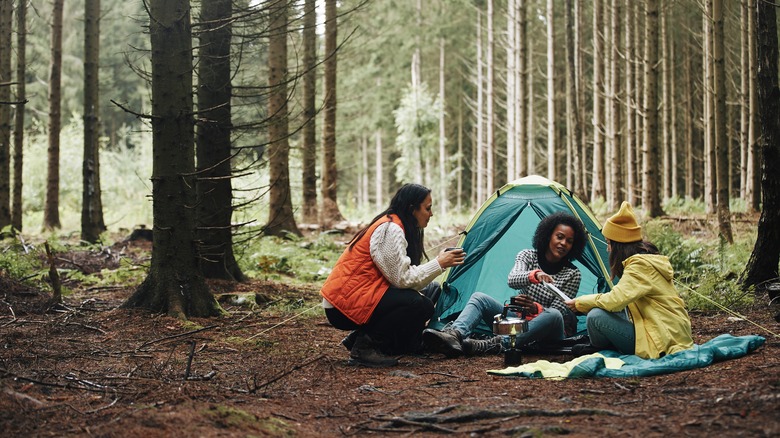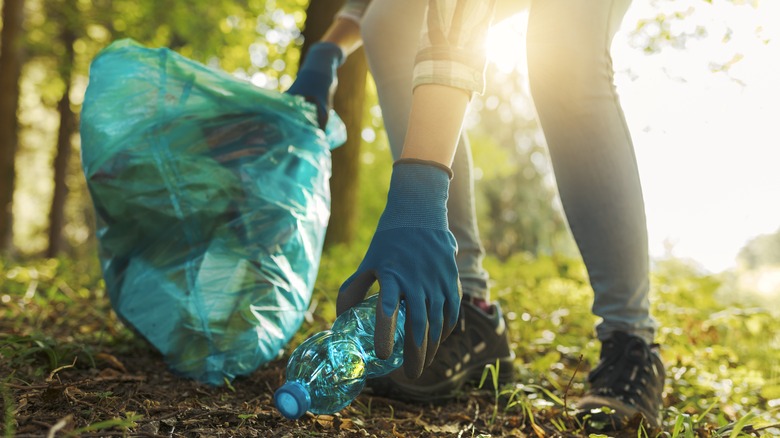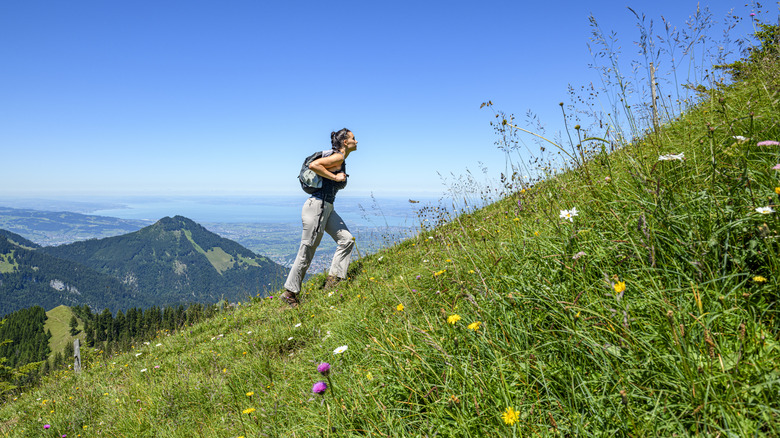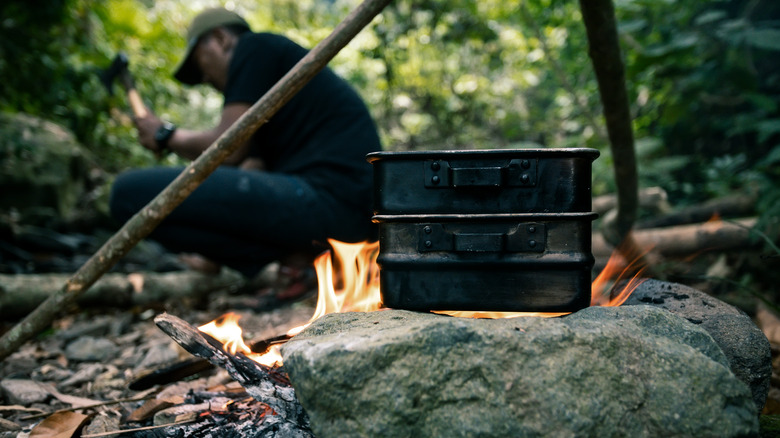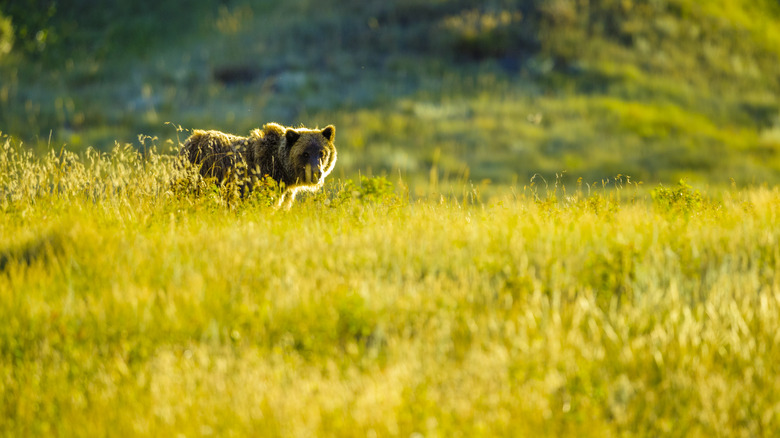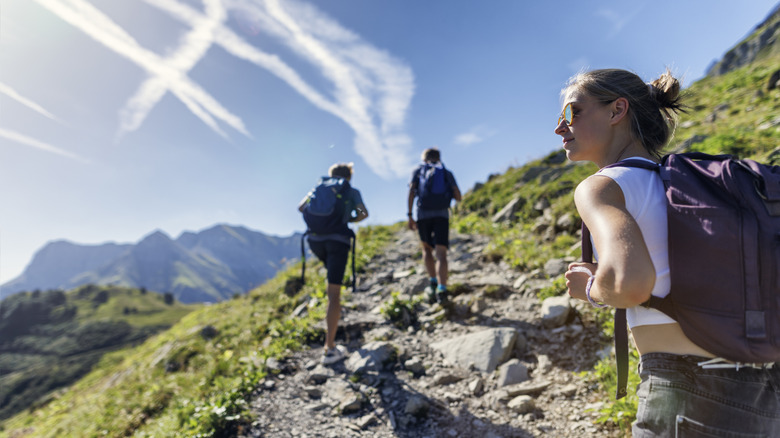The 'Leave No Trace' Principles Explained
One of the most exciting things about spending time in nature is the feeling of being somewhere untouched by your fellow humans. Unfortunately, our presence in the wilderness can change it and leave it worse than we found it. Aside from ruining the experience for the next human visitors, our impact on the local ecosystems can be devastating for the animals who make it their home. Is there a way to experience and enjoy the natural world without harming it?
That's what Leave No Trace is all about. It is a set of seven guidelines for anyone in nature to follow in order to keep the wild, well, wild. The principles, which were developed by the Leave No Trace Center for Outdoor Ethics based on research from the US Forest Service, National Park Service, and Bureau of Land Management, are specifically designed to teach people how to enjoy being outside in nature without damaging it.
Plan ahead and prepare
The first of the Leave No Trace principles is just good common sense, for your own safety as well as the safety of the plants and animals around us. Before you set out on a hike, make sure that you know where and when you will be going, and find out what the conditions will be like while you're outdoors.
Groups that haven't looked into the rules for a park ahead of time may find themselves making illegal campfires or camping in areas which are unsafe for both them and the environment. Planning ahead for bad weather or getting lost can keep you from having to resort to methods that can damage the environment, like using marking paint or stacking up rocks to find your way back to camp. You can reduce the risk of damaging the environment in less extreme situations, too. Scheduling your trip for a time when there will be less other people visiting the area can make your journey more enjoyable, and also reduce damage done to trails and campsites by overcrowding. If you remember to limit the amount of prepackaged food and single-use bottles you bring, you're less likely to accidentally leave wrappers and bottles behind.
Travel and camp on durable surfaces
The second Leave No Trace principle protects land, plants, and waterways that can be impacted by humans setting up their campsites nearby. When people repeatedly walk in the same spots, the land below and any plants and insects living on it, get trampled. While stepping on the ground is obviously unavoidable, we can choose to set up our camps and go for our hikes in areas that will cause less damage.
If an area is frequently used, it's best to camp in established campsites and hike on the trails. These areas have been set aside for people to use, and it reduces damage to other areas. Whenever possible, it is best to avoid camping and hiking in areas that are completely wild, but if you are visiting an area that is not usually hiked or camped, you can reduce damage by not walking in the same places frequently or camping in the same place more than once. Walking through an area once is far less damaging than walking back and forth between the same two points repeatedly.
Dispose of waste properly
One of the worst things you can do when out in nature is leave your trash behind. The easiest way to prevent littering is simply to bring everything that you brought with you to the wilderness back with you when you leave. It can be easy to leave things behind by accident, but by carefully inspecting campsites for any trash, we can reduce the risks.
It's one thing to make sure not to leave bottles and cans in the woods, but there are other kinds of waste. If you go to the bathroom in the wild, it's a good idea to dig a hole for your waste and any toilet paper you may use, that is at least 6" deep, and more than 200 feet away from camps, trails, and water. You should also be careful when bathing and washing dishes. Choosing a biodegradable soap and ensuring that your used water doesn't go back into natural water sources can help.
Leave what you find
Just as Leave No Trace advises taking everything that you brought into nature back out with you, it also recommends leaving everything you find in the wild behind when you leave. It can be tempting to pick up shiny rocks and pick flowers, but everything in the ecosystem, from the leaves to the stones, has a role to play. The pinecones are carrying seeds. The fallen logs are homes for insects. The plants are food for grazing animals. If you spot something interesting in the woods that you want to show others, it's safest to just take a picture.
The fourth principle also encourages hikers and campers to leave the environment unchanged — not carving into trees, pulling up plants, or digging trenches. Even though these principles are designed to keep the wild parts of our world untamed, it's also recommended not to dismantle any official man-made things you find, like fire pits built by the park or authorized navigation cairns. Not only can this inconvenience your fellow travelers, it forces workers to rebuild these structures, which is more damaging to the environment than just leaving existing ones where they are.
Minimize campfire impacts
Campfires are often necessary for cooking and staying warm in nature, and for many, they are one of the most enjoyable parts of camping — but if done wrong they can cause serious damage to the natural world, from demand for firewood to forest fires.
The easiest thing you can do to avoid doing damage to the environment is not make a fire in areas where fires are forbidden. Using a fire pan or small stove for cooking and lanterns for light can be great alternatives to traditional campfires where they aren't allowed (and even where they are.) If there is an established fire ring, it's best to use the same one again rather than damaging another area with fire.
Try to keep your fire from growing too large, and when you're done, make sure that it is completely out. Humans are the main cause of forest fires, and in the right weather conditions, a tiny, still-glowing ember can eventually become a devastating fire.
Respect wildlife
When we travel out into nature, we are in the homes of wild animals, and should always treat them with respect. When outdoors, it's highly likely that people will see wild animals. This can be one of the most enjoyable things about exploring nature, but it's best not to get too close. Getting too close to a skittish animal can cause it to lash out, which is dangerous for both them and the curious person trying to get a closer look. In some situations, startling an animal can have deadly consequences.
It's also important to store your food in a way that keeps animals from getting into it. If animals are fed by humans too often, intentionally or unintentionally, they may approach them looking for food — and not all humans are friendly. Sometimes, our food may even be toxic to them. In order to keep animals safe, it's a good idea to keep your food, trash, and scented items in sealed tubs to avoid attracting hungry critters. This is particularly vital in areas with bears.
Be considerate of others
While most of the principles are designed to keep the ecosystems around us safe and prevent people from getting into accidents, the last one has more to do with not ruining anyone else's experience. Exploring nature is one of the most amazing parts of our world, and by being respectful of others, we can ensure that everyone can enjoy it.
One of the easiest ways to do this is to keep noise down while on trails and in campsites. Many people go into nature to hear birdsong, running water, wind, and other sounds of the wild. When possible, keeping the volume of phone calls and music down can make sure others around you can enjoy the outdoors their way while you enjoy it in yours. Practicing common courtesy on trails by making way for others, cleaning up after your dogs, ang giving others space whenever possible can ensure a better experience for everyone.
